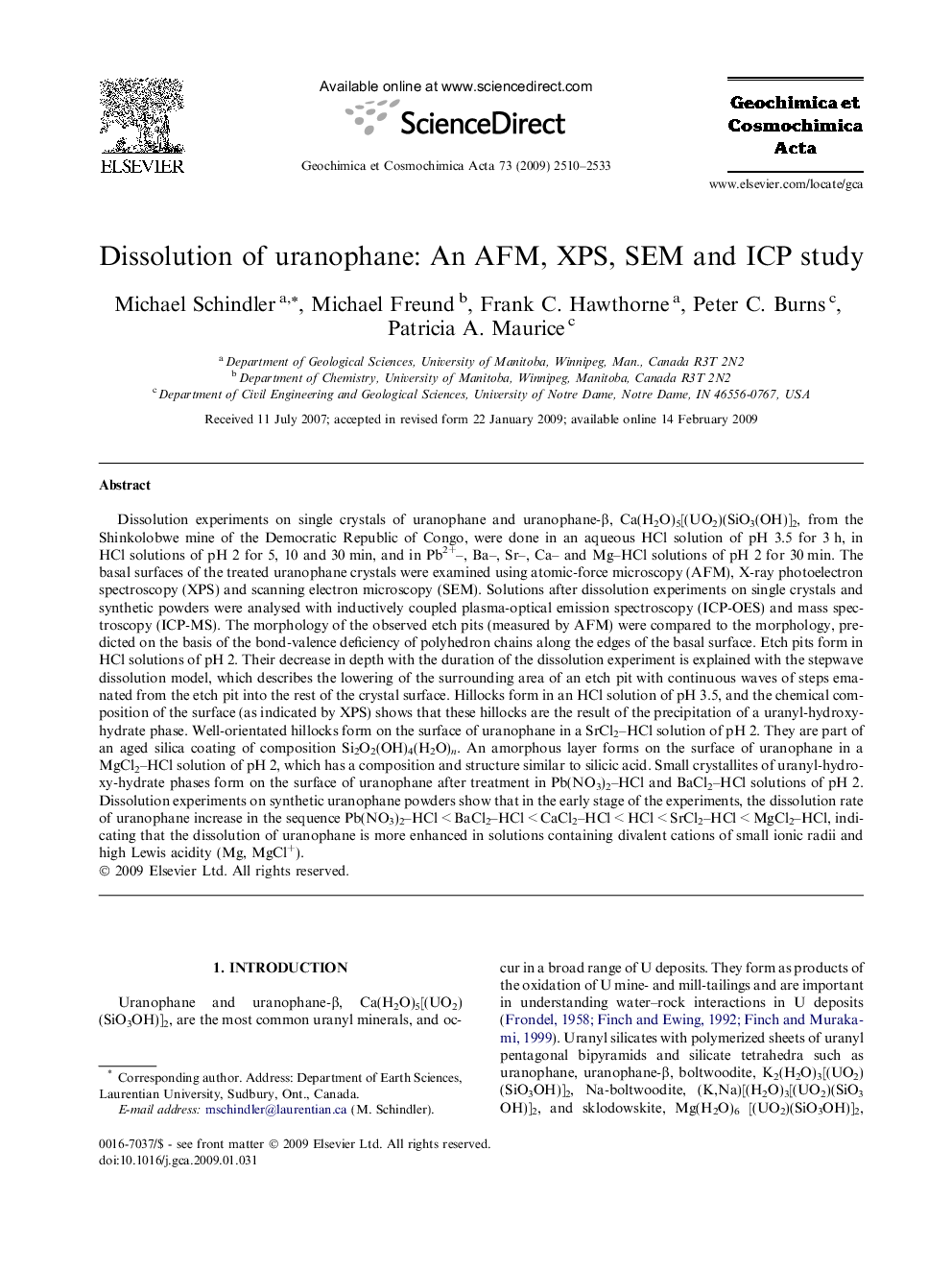| کد مقاله | کد نشریه | سال انتشار | مقاله انگلیسی | نسخه تمام متن |
|---|---|---|---|---|
| 4705068 | 1352941 | 2009 | 24 صفحه PDF | دانلود رایگان |

Dissolution experiments on single crystals of uranophane and uranophane-β, Ca(H2O)5[(UO2)(SiO3(OH)]2, from the Shinkolobwe mine of the Democratic Republic of Congo, were done in an aqueous HCl solution of pH 3.5 for 3 h, in HCl solutions of pH 2 for 5, 10 and 30 min, and in Pb2+–, Ba–, Sr–, Ca– and Mg–HCl solutions of pH 2 for 30 min. The basal surfaces of the treated uranophane crystals were examined using atomic-force microscopy (AFM), X-ray photoelectron spectroscopy (XPS) and scanning electron microscopy (SEM). Solutions after dissolution experiments on single crystals and synthetic powders were analysed with inductively coupled plasma-optical emission spectroscopy (ICP-OES) and mass spectroscopy (ICP-MS). The morphology of the observed etch pits (measured by AFM) were compared to the morphology, predicted on the basis of the bond-valence deficiency of polyhedron chains along the edges of the basal surface. Etch pits form in HCl solutions of pH 2. Their decrease in depth with the duration of the dissolution experiment is explained with the stepwave dissolution model, which describes the lowering of the surrounding area of an etch pit with continuous waves of steps emanated from the etch pit into the rest of the crystal surface. Hillocks form in an HCl solution of pH 3.5, and the chemical composition of the surface (as indicated by XPS) shows that these hillocks are the result of the precipitation of a uranyl-hydroxy-hydrate phase. Well-orientated hillocks form on the surface of uranophane in a SrCl2–HCl solution of pH 2. They are part of an aged silica coating of composition Si2O2(OH)4(H2O)n. An amorphous layer forms on the surface of uranophane in a MgCl2–HCl solution of pH 2, which has a composition and structure similar to silicic acid. Small crystallites of uranyl-hydroxy-hydrate phases form on the surface of uranophane after treatment in Pb(NO3)2–HCl and BaCl2–HCl solutions of pH 2. Dissolution experiments on synthetic uranophane powders show that in the early stage of the experiments, the dissolution rate of uranophane increase in the sequence Pb(NO3)2–HCl < BaCl2–HCl < CaCl2–HCl < HCl < SrCl2–HCl < MgCl2–HCl, indicating that the dissolution of uranophane is more enhanced in solutions containing divalent cations of small ionic radii and high Lewis acidity (Mg, MgCl+).
Journal: Geochimica et Cosmochimica Acta - Volume 73, Issue 9, 1 May 2009, Pages 2510–2533